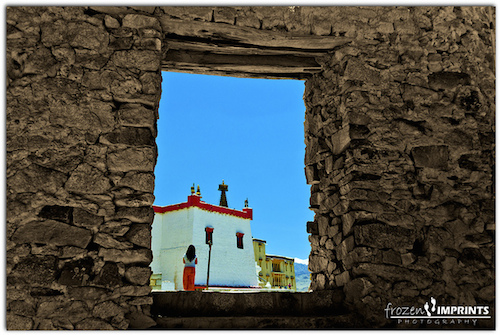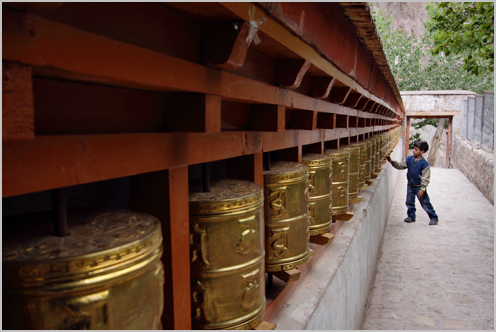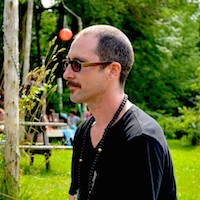This article is the second in a series. Read part one here:
Walking in Beauty: Why Higher Education Should Be Indigenized
Some destinations are so different from your current location that they do not appear on your map, and consequently, can only be arrived at by accident or with the help of special teachers.
This was the case with my own adventure in learning how to teach. For I got to a new vista, first by following the path of my own pedagogical disappointments, and secondly, by receiving guidance from some powerful and wise teachers. This is what I learned three years ago that started the change.
For the briefest moment, I heard a voice that was not a human voice, it was a higher voice, a voice speaking for the Earth, for the love of all life. And somehow, I didn’t brush it aside as my own thought, but could hear it as something much more special, and capable of seeing things far beyond my meager thinking. This voice instructed me to focus on the sacred quality of all relationships.
Now on hindsight, I can appreciate this as a key aspect of what indigenizing education calls for—the healing and nurturance of our relationships, to each other, to the Earth and to our higher Selves.
How did I get here? After 10 years of teaching, I was feeling at once better than ever about my teaching, and yet as disconnected as ever from my students. What is going on? I kept asking myself. Is this disconnection something that has just happened, or is it something that I’ve just become aware of for the first time?
Inspired by the teaching methods of my life partner, yogini, musician and philosopher Jen Taylor, I was beginning to understand the feminist perspective that education needs to be more personal, that philosophy needs to be more embodied, and that rationality needs to be balanced by heart wisdom. Jen is a feminist philosopher who turned first to yoga, and then to play-based forms of meditation such as circus yoga, as a way to teach mindfulness and challenging philosophical principles in a way accessible even to young children.
As I began the process of healing in my own life through the attempt to build nurturing, loving relationships in all dimensions of my social existence, this process naturally spilled over into my teaching.
The impersonal and disembodied character of academic life had always bothered me, even though as an introverted, left-brained, heterosexual male, the arts of reading and writing served me well in forging a personal identity as an observer and a thinker.
And yet, must one write and teach in a depersonalized voice? While my partner taught me to let down my defensiveness and ego, and to trust the wisdom of my feelings and my body, suddenly my relationship with my students started to take on a new meaning. Practices standard to most of the classes I had taken as a student or taught as a teacher started to feel constrictive and counter-productive. But counter-productive towards what goal?
Meanwhile, during a shamanic medicine circle in which I had the great privilege to participate, a great and powerful Spirit teacher gave me the gift of deep insight into my teaching situation. It can be difficult to get to know your students personally, especially in the part-time, adjunct teaching circuit. There’s barely enough time to cover the material in the curriculum, let alone to have a real relationship with the students.
Or so I was thinking when I asked for guidance. What this Voice told me in no uncertain terms was: you have it completely upside down. You think that you are too busy working on the curriculum to get to know your students, but the whole point of your vocation should be to get to know your students, and the so-called subject-matter is really just a tool to do that!
This amazing insight suddenly allowed me to appreciate something I had heard various spiritual luminaries talk about before, but hadn’t really grasped.
Namely, that teaching is all about relationship; that our social ethics needs to move towards a relationship-based view of development.
If education is going to be a healing, empowering agent, then it must serve the emergence of a more sane society. This means that, as we move into a post-consumerist, post-growth economic era, we need to replace a society based on the consumption and acquisition of material things with a society based on the cultivation of relationships.
For an example of what this means, consider the traditional education practiced in Little Tibet. Ladakh is—or was, until it was forced to start western-style development in the 1970s at the behest of the India government—a truly sustainable, egalitarian, humanistic yet spiritual, and above all, happy culture.
As Helena Norberg-Hodge’s seminal study of Ladakh (Ancient Futures: Lessons from Ladakh for a Globalizing World. Sierra Club Books, 2009) makes abundantly clear, community-based cultures who live in long-term harmony with nature, which systematically honor and nurture human relationships while creating a rich space for individual personality to flourish, have existed and still do exist. These “primitive” cultures were sustained and unfolded over many centuries into veritable paradises of harmony.
And they were not “poor.” They were and are affluent in the “original” sense as argued by Marshall Sahlin’s in his influential study of Neolithic economics: they supplied people with what they needed to be maximally happy, not stupid stuff they don’t need for more than they can afford.
How does education work in traditional Ladakh? Education in Ladakh consists of profoundly intimate engagement with every aspect of Ladakh culture, from how to weave clothe and build a house, to how to resolve an argument, or hold burial rights. There is no place where the community ends and the classroom begins.
And along with ecological awareness and intimate geographical knowledge, Ladakhis receive a rich metaphysical training, in the form of (Buddhist) psychology, social ethics, holistic health and cosmology—a worldview and practical philosophy which supports sustainably both a larger ecology as well as a truly evolved perspective on human flourishing and non-violent living.
As Buddhists, Ladakhis live in a social ecology which supports, and is supported by, a continuous practice of compassion and meditative, creative engagement with the world and with themselves. The exquisite external environmental balance is a reflection of an equally impressive internal psychological-spiritual balance which sustains a rich quality to life itself.
Similar levels of deep harmony, held in place by worldviews emphasizing interdependency, humility and compassion for all life, are found in most traditional, indigenous societies; the very societies which continue to be exterminated exponentially by business as usual—that is, by education as usual.
So incorporating an indigenous perspective into education is a call to examine all of our relationships, both internal and external, and to learn how they can be harmonized in ever deeper ways.
This is not just a means to better learning.
Rather the harmonizing of relationships—between teacher and student, teacher and teacher, student and environments inside and outside—is a fundamental overriding objective of the entire educational enterprise.
While indigenous cultures knew and practiced this, science is beginning to catch up to the ancient wisdom and give us some insights into how it works.
This kind of harmony we are talking about is what is described by complexity science as the geometrical condition of coherence. It is a situation where every entity implicated in a web of interdependent relationships, benefits and is benefited by, those relationships. It is the essence of what we find both beautiful and sacred in Nature.
If our society is to survive in the Anthropocene—this new geological period we’ve entered in which the human presence is the primary agent driving fundamental change on earth—it will do so by learning to organize itself in patterns of coherence.
So, what would this mean for the modern classroom? How would one incorporate some aspects of that traditional worldview into modern education?
At first, I wasn’t sure and so I just started removing elements of the teaching situation that had always bothered me for one reason or another; things that were assumed as necessary by standard pedagogical practices and that I had reluctantly learned to “go along with.”
I wasn’t consciously teaching in a new direction, I was simply removing perceived blockages to the learning process, and more specifically, because I felt that they undermined the development of a relationship of partnership and trust in the learning process.
As these student-teacher relationships began to unfold in this new context, they themselves pointed the way to more effective learning. I began to see my task as simply that of getting out of the way; of removing misguided impediments to a process with its own higher intelligence and compassion.
Where this new orientation would take me, I had no idea, but I knew I could never go back to the way things had been. The next revelation would have to do with examining and removing hierarchy, control and fear from teaching.
Love elephant and want to go steady?
Sign up for our (curated) daily and weekly newsletters!
Apprentice Editor: Jamie Khoo/Editor: Catherine Monkman
Photo: Rohit Ganda and Nevil Zaveri, both Flickr Creative Commons
 Share on bsky
Share on bsky







Read 2 comments and reply